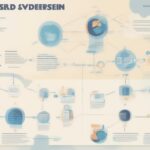In the realm of computer vision, object detection has seen remarkable advancements over the past few years. One such breakthrough is the YOLO (You Only Look Once) algorithm, which has set a gold standard for real-time object detection. This article takes you through the mechanics of YOLO and its implementation using TensorFlow and Keras with Python, showcasing how it transforms image processing by predicting bounding boxes and class probabilities in a single evaluation.
The Evolution of Object Detection
Before diving into YOLO, it’s essential to understand the context of its development. Traditionally, object detection was performed using methods like sliding windows, which scanned images at multiple scales to identify objects. This was succeeded by approaches like RCNN, Fast RCNN, and Faster RCNN, each improving speed and accuracy but still requiring multiple passes through an image.
In 2015, YOLO revolutionized the field with its novel approach by framing the detection task as a single regression problem. Unlike its predecessors, which made multiple passes over the image, YOLO processes the image in one go, enabling it to deliver impressive speed without sacrificing accuracy.
How YOLO Works
YOLO’s brilliance lies in its unique architecture structured to predict bounding boxes and class probabilities directly from full images. The algorithm begins by dividing the input image into a grid, which allows it to focus on multiple parts of the image simultaneously.
Grid Division and Predictions
-
Image Grid Division: YOLO divides the image into an N x N grid. Each grid cell is responsible for predicting bounding boxes and class probabilities for objects whose center falls within the cell.
-
Bounding Box Prediction: For each grid cell, YOLO predicts a fixed number of bounding boxes (usually two). Each bounding box prediction includes:
- The coordinates of the box (center x, center y, width, height).
- A confidence score that predicts whether the box contains an object and how accurate the box is.
-
Class Probability: Each grid cell also predicts the probability of each class being present. If a grid cell contains an object, it will output the class with the highest confidence.
Output Structure
The output for each grid cell can be summarized with the following vector format:
- The probability of the presence of objects (p_c).
- Class probabilities (c1, c2,…, cn) for all classes.
- The bounding box coordinates (x, y, width, height).
For instance, if one cell detects a dog, it will produce a high confidence score for the ‘dog’ class while outputting appropriate bounding box coordinates.
Handling Multiple Objects
One of the challenges in object detection is handling multiple objects in a single image. YOLO addresses this by allowing each grid cell to predict multiple bounding boxes. However, only the box with the highest confidence score among the predicted boxes for a grid cell is retained, while others are suppressed using non-maxima suppression techniques.
Training YOLO
To train YOLO, a large dataset of images with labeled bounding boxes is required. Supervised learning is employed, and the algorithm minimizes a loss function that combines errors from both bounding box predictions and class probabilities. This ensures that YOLO not only predicts the right objects but also accurately locates them within the input image.
Implementation in TensorFlow and Keras
To implement YOLO in TensorFlow and Keras, one can use pre-trained models available from various repositories, or one can train a model from scratch if a suitable dataset is available. The process generally follows these steps:
-
Data Preparation: Gather and annotate a dataset of images with bounding boxes and class labels.
-
Model Configuration: Define the YOLO architecture or load a pre-trained YOLO model using Keras.
-
Training: Train the model on your dataset, adjusting hyperparameters for optimal performance.
-
Inference: Use the trained model to make predictions on new images, extracting bounding boxes and class probabilities efficiently.
-
Post-Processing: Implement non-maxima suppression to refine predictions.
Conclusion
The YOLO algorithm has transformed the field of object detection with its unparalleled speed and efficiency. By simplifying the detection process into a single evaluation, it has opened new possibilities in real-time applications ranging from autonomous vehicles to surveillance systems. With frameworks like TensorFlow and Keras making it easier to implement complex models, the potential for YOLO in both research and industry continues to grow.
As computer vision technology develops, understanding and utilizing algorithms like YOLO becomes crucial for developers and researchers aiming to leverage the power of real-time detection in their applications.



